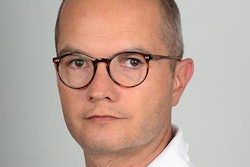Dear AuntMinnieEurope Member,
When patients search the web for details about a procedure, YouTube videos often come up. But how reliable and comprehensive are they?
A new study of prostate biopsies guided by transrectal ultrasound suggests that many YouTube videos are inaccurate and incomplete, even those made by healthcare professionals. The authors' verdict is pretty damning, to put it mildly. Go to our Ultrasound Community, or click here.
Our recent article about bullying and harassment in radiology was one of our top stories last month. As a follow-up, don't miss a report about U.K. authors who have tried to work out the precise cost of bullying for healthcare systems. Get the full details here.
Artificial intelligence (AI) is starting to permeate into every radiologist's working life, including training. The updated scheme for this year's 254 French radiology residents will take account of AI, as well as radiation dose and structured reporting. Visit the Imaging Informatics Community, or click here.
French radiologists tend to excel when it comes to hepatic imaging. At the recent national radiology congress, JFR 2018, researchers provided an outstanding overview of pediatric liver tumors. Learn more here.
Meanwhile, a Swedish-led group has published the findings of a study involving almost 15,000 women screened over a period of five years who first underwent two-view digital mammography screening and then one-view digital breast tomosynthesis with reduced compression during another visit. Find out more in the Women's Imaging Community, or click here.
As imaging vendors put the finishing touches to their plans for the upcoming RSNA 2018 meeting in Chicago, now is an excellent time to take stock of how the four major companies are faring. For an in-depth assessment by our market columnist Stephen Holloway, head to the Molecular Imaging Community, or click here.



















